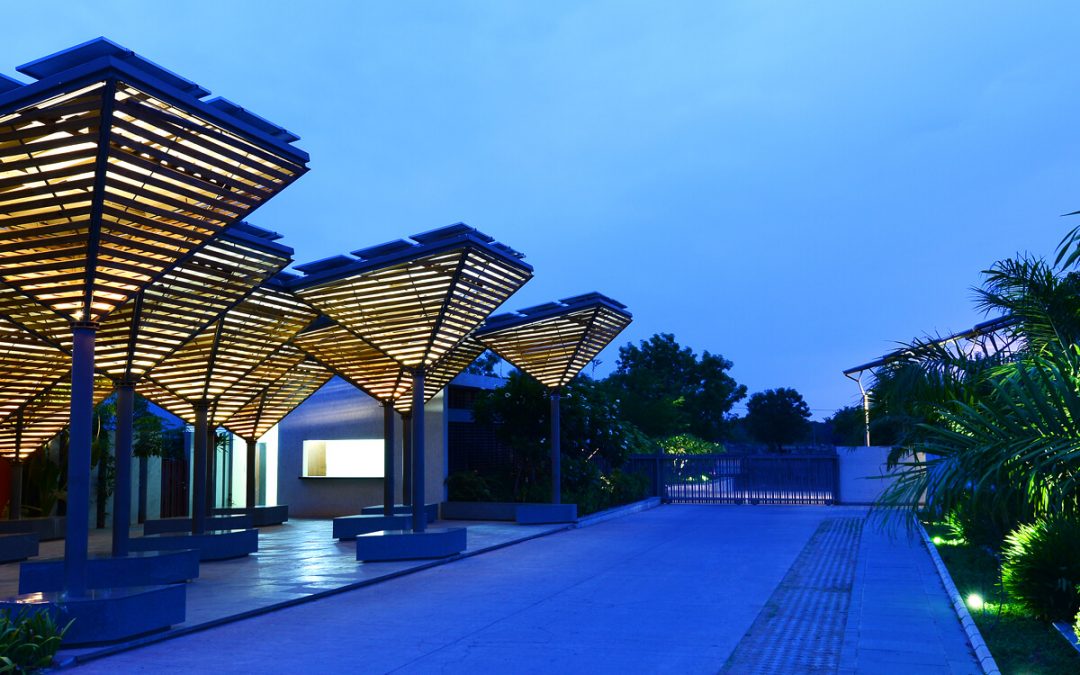A country like with 9 months of prolonged summer and heat climate, India’s plans of realizing Solar Power for All by 2022 is only possible by making the solar power infrastructure simple and affordable for all.
Welcoming Green Projects: Indian Real Estate has witnessed the rise and fall and about-to-rise of the housing industry in the last 10 years. One of the key lessons they have learned or willing to learn is to make the optimising cost of construction and building communities with optimal maintenance.
Building green projects are not just a thing of brand appeal or marketing differentiator, but the need of the hour.
The building sector in India consumes 30% of the total conventional power in India, as per the quote by Mr. PK Pujari, former secretary of Power in the Energy Conservation Building Code Manual.
Energy demand is nowhere to be stopped or controlled owing to the growing population or the technology-intensive life patterns. Thanks to the framework of Ranked 2 in the world after China in the Solar energy production, India, as a country – till some years before, hasn’t figured the road to 100% utilization of solar energy. The mission to generate 20 GW of solar power capacity by 2020, as per the National Solar Mission ( 2010) has taken a great stride with the power generation has increased from 10 MW in 2010 to 16,00 MW in September 2017.
ECBC, Government has mandated the renewable energy for water heating or power production across the building segments – be it residential, corporate or hotels.
Hospitals, hotels, hostels, lodges, community centers and even residential buildings proposed on plots of more than 500 square meters will be required to make provision for solar infrastructure to light up public spaces and corridors
A dedicated REGZ (Renewable Energy Generating Zone) equivalent to at least 25 % of roof area or area required for the generation of energy equivalent to 1% of total peak demand or a connected load of the building, whichever is less, shall be provided in all buildings, as per the Manual.
Challenging yet welcoming: This pacing progress towards a clean renewable energy-driven country has to be majorly endorsed and implemented by Real Estate companies, who carve the housing structure of India.
Apprehensions from various ends about the initial infrastructure set-up cost are being cleared with welcoming subsidies and slashed pricing on solar infrastructure set-up.
“More awareness and thereby creating openness among the Real estate community to adopt the change right at the design level is highly critical. Designers like us to take that responsibility. In the end, this paradigm shift is about the benefit for everyone, including the earth”, says,Mr. Dhamodaran, Director FHD Group.
FHD Group in its Sustainable Living initiative – Organo, has walked the talk by implementing solar panels before the construction and has observed significant cost savings.
Mr. Indrasen Reddy from Four Solar opines.
What is the key driver that triggered this great shift, where now solar production is becoming mainstream and at end-user base
”The key driver for the integration of Grid Connected Rooftop Solar with real estate or adoption of Grid Connected Rooftop Solar by customers is Free Power while the undercurrent of clean energy is recognized and technology proven. Customers were wary of the technology first, but have now embraced it with a condition that there should be a clear return on investment. Since the solar power system is expensive, “saving the world” sounds good on paper; only when it is translated to saving money then customers adopt. We see the rise in technology adoption because customers have enough successful case studies on Saving Money and Free Power.”
What are the benefits that this change will foresee – numbers, estimates in savings – abit quantified
”The government of India has an ambitious target of 40 GW for Rooftop Solar by 2022. Though the adoption rate has been lower than expected, the market is positive and is expecting more installations than ever during this and next fiscal years.”
The benefits are ‘Saving Money’ and ‘Free Power’. A customer investing in a 100 KW grid-connected rooftop solar system will get his Return on Investment in about 3.5-5.5 years (based on the tariff); this means, after the RoI period, a customer consumes free electricity for 20-22 years with minimal maintenance costs.
What are the challenges that builders or users have to be kept in mind?
“There are no challenges as such apart from paperwork for Subsidy Clearance and Net Meter Installation, which anyhow is under the solar company’s scope.”
“The main challenge in rooftop solar is ‘rooftop space availability’. Though many customers want to go for rooftop solar, few of them have to scale down the capacity to meet the roof area and few have to drop the idea altogether due to roof-facing. The roof must face South to North for a maximum generation but we have come across several roofs especially tilted ones that were facing east or west.“
“ Design Firms like FHD Group, who always believed and acted in green and sustainable design has believed that Net-Zero Living is the ultimate destination: Beyond cost-saving and profit maximization lies immense responsibility for each of the real estate developers is to create self-sustaining communities

